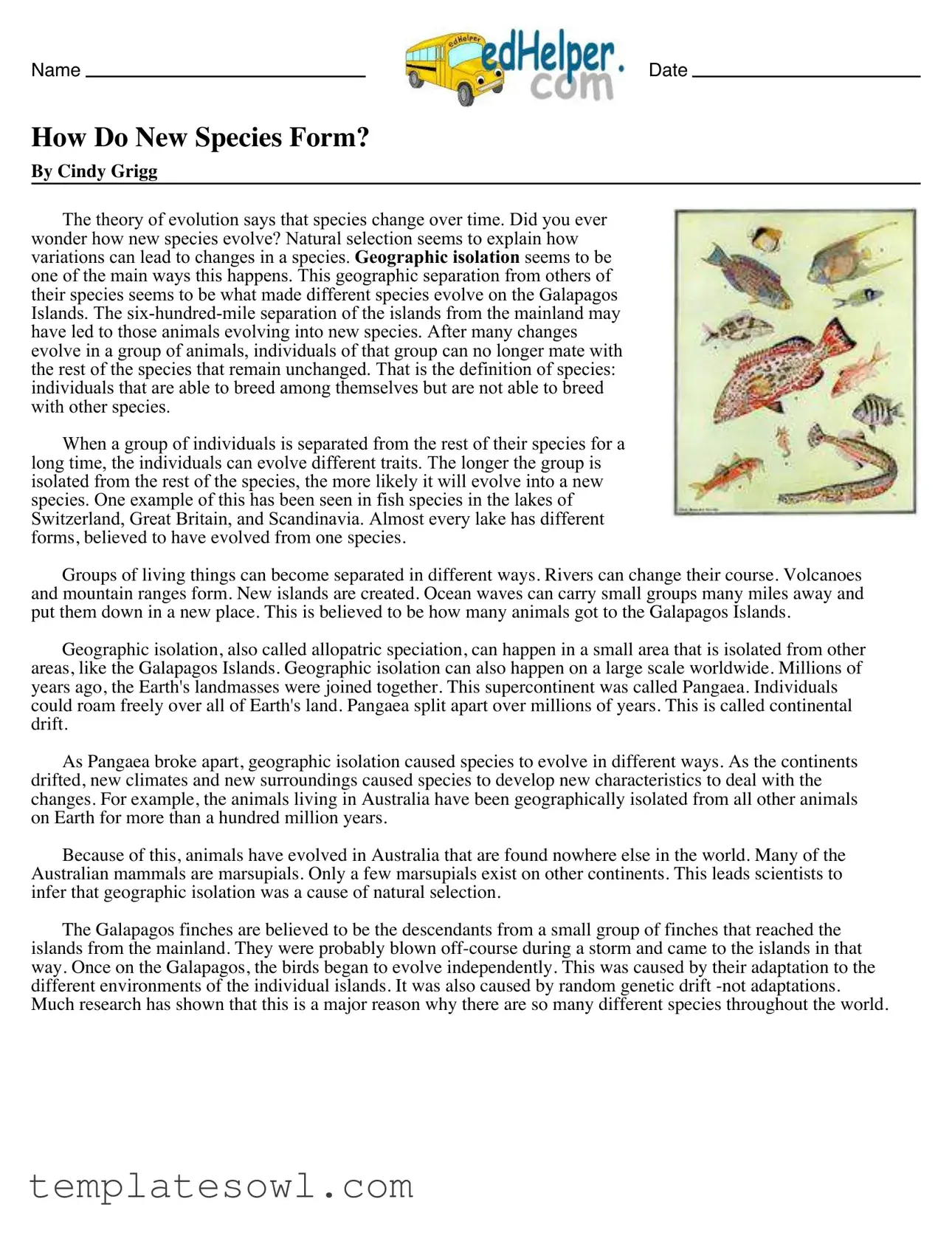1. What is one of the main ways that new species form?
One of the main ways new species form is through geographic isolation. When a group of individuals from a species becomes separated from the rest, they can evolve different traits over time. This separation can occur due to natural events like rivers changing course or volcanic eruptions. As these isolated individuals adapt to their new environment, they may eventually become a new species.
2. What is geographic isolation?
Geographic isolation occurs when some members of a species are separated from the rest by physical barriers, such as mountains or oceans. This separation prevents them from interbreeding. Over time, without gene flow from the original population, the isolated group can accumulate mutations and adaptations, leading them to evolve into a distinct species.
3. What is another name for geographic isolation?
Another name for geographic isolation is allopatric speciation. This term describes the process by which new species arise because of the physical separation of populations, inhibiting their ability to interbreed.
4. The longer a group remains isolated from the rest of the species:
The longer a group remains isolated from the rest of its species, the more likely it is to evolve into a new species. This isolation allows distinct traits to develop, making it progressively unlikely for the isolated group to breed with those from the original population.
5. Animals in Australia:
Animals in Australia probably became geographically isolated and evolved into new species over millions of years. Because Australia has been separated from other landmasses for a significant amount of time, the wildlife there shows unique characteristics not found elsewhere.
6. How do new species form on isolated islands?
On isolated islands, new species can form when organisms arrive from another location and become cut off from their original population. These organisms adapt to the specific conditions and environments of the island. Over time, through the processes of natural selection and genetic drift, these adaptations can lead to significant changes, resulting in the emergence of a new species that can no longer interbreed with the original group.
7. What role does natural selection play in the formation of new species?
Natural selection plays a crucial role in the formation of new species. It acts on the variations within a population, favoring those traits that enhance survival and reproduction in a specific environment. Over time, these selected traits become more common in the population, contributing to evolutionary changes that can lead to the formation of a new species.
8. Why is random genetic drift significant in evolution?
Random genetic drift is significant in evolution because it can lead to changes in a population's genetic makeup purely by chance. It often has a more substantial impact on smaller, isolated populations. This randomness can result in new traits becoming prominent or others fading away, ultimately influencing whether a group develops into a separate species.
9. How does the concept of Pangaea relate to species evolution?
The concept of Pangaea relates to species evolution as it describes how all landmasses were once joined together. When Pangaea began to break apart, populations of species became geographically isolated. This isolation led to diverse evolutionary pathways as different groups adapted to their specific environments, ultimately resulting in the wide variety of species we see today.



